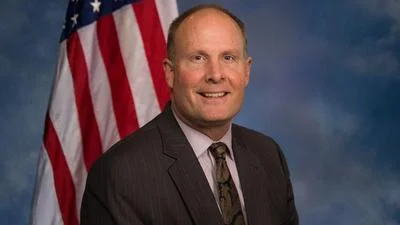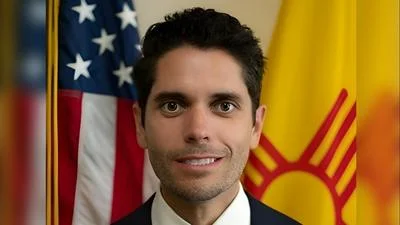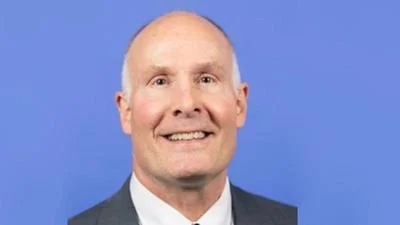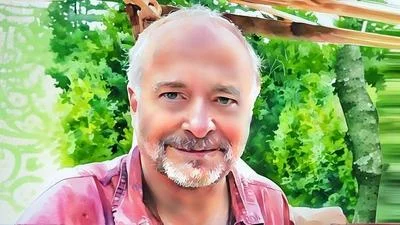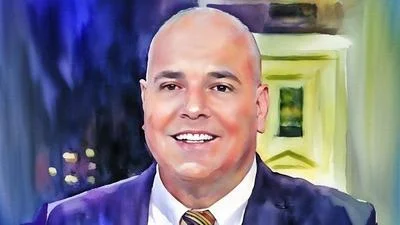Dr. Anish Bhatnagar is a physician who works on rare diseases. He is the founder and CEO of Soleno Therapeutics.
Federal Newswire
Can you share your background in cancer research?
Anish Bhatnagar
I am a physician by training. I worked in the cancer space for probably the first half of my career, which is now more than 25 years long. A lot of the work was in early immunotherapy for cancer, working with radioactive substances attached to antibodies. It was some particularly high science at the time.
Following that, I did a lot of work in other diseases like neurology and cardiovascular diseases. I worked on devices and diagnostics along the way, and on several products that are now approved.
About seven years ago, I started working in the rare disease space. Rare diseases in the United States are less than 200,000 prevalences. One particular rare disease that we've been working on is called Predator Willi Syndrome.
My current company is called Soleno Therapeutics. We are publicly traded on Nasdaq. We're about 30 people. We are based in the San Francisco Bay Area. We are trying to…make a difference in the lives of these 10 to 20,000 families in the country.
Federal Newswire
What does the science of the biopharma sector look like, specifically at Soleno?
Anish Bhatnagar
I can tell you that it's very different from what [it] looks like at Pfizer. We and many other companies like ours do a lot of the high-risk work.
When you look at treatments for small populations, or treatments that have a low likelihood of success but can make a big difference, over the last decade, a lot of this research and development…has been transferred to companies like ours. We raise money around these concepts, and it's not easy to do.
Very often you see situations where Big Pharma will come in towards the end of the process and acquire these companies for the work that they've done. What most people don't see is the hundred companies that don't make it for the one that does, because this is indeed very high-risk work. We have lived with a horizon of cash that is 6 to 12 months, maybe a little bit more. Only recently when we were able to really prove the concept that we've been trying to prove have we managed to transition to a situation where we are much better capitalized.
But I would say an important part of our daily living is really managing how we survive. Our horizons for existence are really small too. We work with a lot of outside vendors to do research [and] experiments. We work with hospitals all over the world to do our clinical trials.
We are always thinking about our [expenses]. That's the big difference.
Federal Newswire
How long has your company been active?
Anish Bhatnagar
About seven years. We started [in 2017].
Federal Newswire
Do companies like yours often make it past one or two years?
Anish Bhatnagar
I should give you the backstory about the company which will tell you more about the risk that goes into doing things like this. I joined a company called Campania in 2007. [It] was working on a late-stage development program for treating migraines. This was a relatively simple solution. After a few years of work, it was clear that it was not good enough.
We pivoted to doing something else in a slightly different space which had to do with allergies. [It] worked well, but there was not a valid commercial path forward.
I ended up acquiring a diagnostic technology out of Stanford, which we developed to create a very neat neonatal diagnostic product. [The] product is currently being marketed in other countries, but after I took the company public on Nasdaq to raise money to launch the product, it became clear that the reimbursement environment in the US was such that it was either not going to be feasible or it would take an extremely long time.
I decided to pivot the company into being more of a drug development company again. I started Soleno by acquiring a small company out of Southern California which had failed to raise money. We have raised around $300 million for now.
This is the complexity of the business. If at the end of the day a product is successful, if we can actually make a difference to these 10-20,000 lives, it's all going to be worth it.
Federal Newswire
Can you explain how the commercialization side of the company works?
Anish Bhatnagar
[This] is very difficult. Not to single out Big Pharma, [but it] has hundreds of people involved in different aspects of developing the drug from very early on. That includes people who are experts in commercialization and marketing development practices. None of our 30 employees to date are commercial.
It's only now that we will be bringing on people who have commercial expertise because we need to be absolutely sure before we spend the money on commercial development that we have a real product.
Federal Newswire
How is the patient community suffering and how do you help?
Anish Bhatnagar
Predator Willy syndrome is a genetic disease that happens by chance or spontaneously in about one in 15,000 live births. It is the same regardless of geography or ethnicity. It happens [at] the same prevalence wherever you are in the United States. It's estimated that between ten and 20,000 patients have it.
Interestingly, the disease is diagnosed very close to birth because these babies are born with very low muscle tone. They are floppy babies. You pick them up in the palm of your hand and they kind of drape over on both sides. It's very obvious that there's something wrong and they will invariably end up in the neonatal intensive care unit.
The doctor is going to run a bunch of tests on them and one of the tests is going to be a genetic test for TWC. These families will be told very close to the time of birth that they have a child who has TWC, but there's not much that can be done for them. They all get growth hormones because to normalize their stature.
But the true hallmark symptoms of the disease start to develop when these kids are three or four years old. They just develop a disproportionately high amount of body fat and low lean body or muscle mass. By the age of seven or eight, most of them will develop something called hyper fade. That is a hallmark symptom of this disease and it's an insatiable desire to eat.
It's your brain telling you you are starving even while you're eating. So these kids and young adults left to themselves can eat themselves to death for pizzas [and] cookies. Sometimes [it is] things that are not even food because their brain is saying they're starving. The only thing that can be done for this today is to restrict access to food, which means these families live with locked kitchens, locked pantries, alarms, and motion activated cameras so these kids don't get access to food.
If your brain is telling you you're starving and you restrict access to food, you can imagine that you get aggressive [and] destructive. These kids have very significant behavioral abnormalities and these families live in the fear of extreme outcomes, like 911 calls made from school, visits to ERs, and as I said [they are] left to themselves. There are rare situations where these kids will get access to food and their stomach will rupture and they can even die from it.
It's a truly horrible disease with no treatments available for it. Unaffected siblings have PTSD. Very often families have trouble staying together, and for the rest of their lives, which today can be even 60 to 70 years, these patients will need supervision. So something you may not have heard of, but possibly one of the most terrible diseases that are out there.
Federal Newswire
How are you countering this disease?
Anish Bhatnagar
We have a once-a-day pill called CCR, … [which] appears to act on a part of the brain which is creating this appetite. There's a part of the brain called the hypothalamus, which secretes a peptide called the NPI. We believe that we can decrease the production of that peptide, and we also seem to have this drug that works in other parts of the body to decrease body fat, increase muscle mass and improve other metabolic parameters.
We've treated a number of patients in trials to date and the drug appears to have a very significant effect on managing hyperplasia. It appears to improve a lot of the behaviors, it appears to improve the body parameters and the anecdotes that we've heard range from kids in middle school who are normally in special classes can be mainstreamed.
We have a handful of kids who have actually gone to four-year colleges and appear to have the ability to live relatively independently. We have some examples of kids who lost 30, 40 kilograms of body fat. But most importantly, we seem to be able to normalize the lives of these kids in these families enough that they can exist like normal families.
Federal Newswire
How do you ensure that everyone who should have this medicine is getting it?
Anish Bhatnagar
[We have found a] drug that is efficacious in treating the disease. Unfortunately, that's not enough. The only people we can treat today are the ones that are in our clinical trials, and that's a small number. It's a very labor and capital intensive process that we go through to get FDA approval. The only way the drug becomes available to all with the disease is once it's approved by the FDA, assuming it is approved by the FDA.
As I was telling you, we ran a trial recently that reported very positive results just a few weeks ago, and we are hoping to file what's called a new drug application with the FDA by the middle of next year, which means hopefully by early 2025. In the best case scenario, the drug should be available for families with the disease.
I've spent many years working in Pharma, and I've been in the health care health policy space for a long time. I can't help but talk about these breakthroughs in a more religious tone sometimes.
Federal Newswire
How do you work with the public health community, such as the medical technology community and universities?
Anish Bhatnagar
Generally speaking, [small companies like ours do not often do] a lot of the basic lab research [ourselves]. They partner with other entities, whether it's labs or universities or contract labs, to do the work. There is a lot of work on the subsequent phase of development, which is doing human trials.
That gets done in working with hospitals, and particularly for a rare disease like P.O.W.s. You need to be at many different hospitals. For example, our 120 patient study needed 29 sites; 20 in the US and nine in the UK. Often rare disease trials need hundreds of trial sites all over the world.
Subsequent to that, the NIH is a solid source of funding, although we haven't really used NIH funding here, but it's been one of our trial sites. A lot of the basic work does get funded by the NIH.
Finally, the FDA is a really important part of this business. We work with them from the very beginning. All human trials have to be done in concordance with the FDA. We have to do things in a way that they can agree with eventually, proving the point that we wanted to prove: that the drug works…in a way which has a positive risk-benefit ratio.
These things can take a very long time to get through, and they're still considered successful even if they come to fruition 20 years out.
Federal Newswire
Are you optimistic about the future of medical progress, or are we still awaiting more breakthroughs before we see cures?
Anish Bhatnagar
I would say I'm a pragmatic optimist. I think better days are ahead of us, at least on this side of things. I think the science is robust… [and] is ahead of everything else that's happening in making drugs available to the world today. The perfect example of [this]...is the emergency use authorization of vaccines and drugs to treat COVID. That tells you that the regulatory paradigm has a way of moving when it really needs to.
I think what we need to do is perhaps create better contextual regulatory paradigms where, depending on what it is that you're treating… [and] what the risk tolerance is, things can get done quicker, in a more effective manner.
Federal Newswire
Do you believe the public is sometimes unfairly critical of the regulators, such as the FDA?
Anish Bhatnagar
Sometimes, yes. I think the story is a lot more complicated. It's a government entity which has its own constraints on funding and staffing, and the needs to meet certain deadlines. I sympathize with them, and I feel that in a base-case scenario, people are there to do the right thing.
I think they're good public servants. They're looking out for public health. I think what we need to do is give enough tools to the regulators to conform to…the 21st century paradigm of being able to do things faster, better, quicker, [and allow for] whatever is needed at the time. [It is a] complicated reality, but I would certainly not blame the FDA for everything that's happening today.
Federal Newswire
What is the history or story behind the name of your company?
Anish Bhatnagar
Are you familiar with the language called Esperanto? I don't know the language. There may be a couple-hundred people in the world who know it, but I try to look for names that are distinct but have a meaning. Soleno in Esperanto means solemnity, [or] being solemn. I want us to be kind of solemn in the pursuit of what we're doing.



